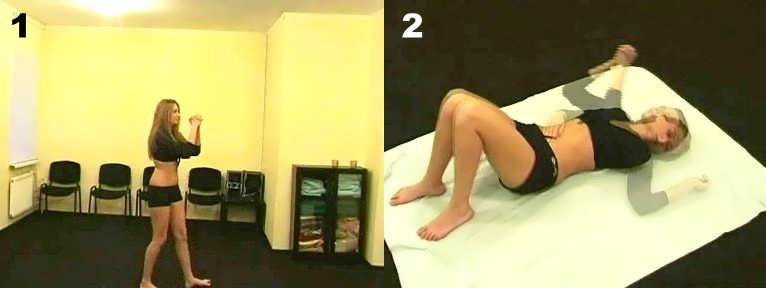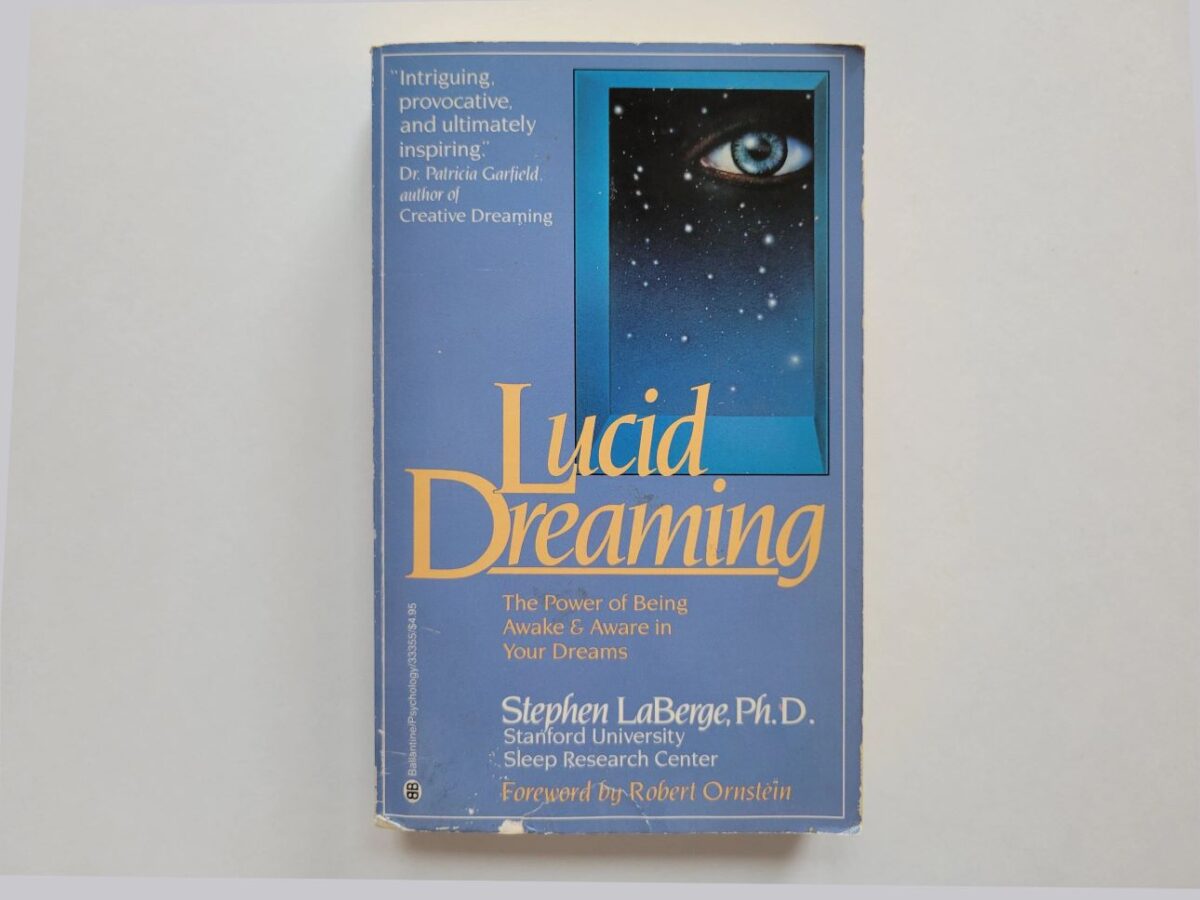This technique is the same as the deepening technique of the same name. If a lucid dream is about to dissolve, dive headfirst with the eyes shut and a desire to dive as quickly and deeply as possible. As soon as lucid dreaming depth returns, translocation techniques may be used to keep from arriving at a dead end.
THE CONCEPT OF DIRECT TECHNIQUES
Direct techniques for entering into an out-of-body experience are used without prior sleep by performing specific actions while lying down with the eyes closed. The advantage of direct techniques is that, in theory, they can be performed at any moment. However, a large drawback exists in the length of time it takes to master the techniques. Only 50% of practitioners achieve success after making attempts over a period of 2 to 3 weeks. For some, an entire year may pass before results are realized. The difficulty in achieving results with direct techniques is not a problem of inaccessibility, but the natural psychological characteristics of the individual. Not everyone is able to clearly understand the specific nuances involved, which is why some will continually make mistakes.
Many practitioners strive to master direct techniques right away because they appear to be the most convenient, straightforward, and concrete techniques. However, it is a grave mistake to begin attempting and mastering lucid dreaming entrance from this level. In 90% of cases where novices begin their training with direct techniques, failure is guaranteed. Moreover, a vast amount of time, effort, and emotion will be wasted. As a result, complete disillusionment with the entire subject of lucid dreaming experiences is possible.
Direct techniques should only be practiced after mastery of the easiest indirect techniques or how to become conscious when dreaming. In any case, difficulties will not wear one down afterwards, as it will be exceedingly clear from one’s own experience that lucid dreaming is not a figment of the imagination. Also, an advanced knowledge of indirect techniques will make it considerably easier to achieve direct entry into lucid dreaming.
It is also worth always keeping in mind the average amount of time lucid dreamingrs spend on direct and indirect techniques to achieve results. For example, a novice expends an average of 5 minutes(5 attempts) on indirect techniques for each lucid dreaming experience (averaging both successful and unsuccessful attempts), but 300 minutes(20 attempts) on direct techniques for each lucid dreaming experience. An advanced lucid dreamingr averages less than a minute(1-2 attempts) performing indirect techniques for each lucid dreaming experience, but 30 minutes on direct techniques(2-3 attempts).
Quality of lucid dreaming experience is not dependent upon the chosen entrance technique. Direct techniques do not necessarily provide a deeper, more lasting lucid dreaming over indirect techniques.
Direct techniques are better suited for some practitioners and not others, but this can only be said for a minority of the practicing population. Meanwhile, indirect techniques are accessible to absolutely everyone all of the time.
Interesting Fact!
In order to obtain best results at traditional 3-day School of Out-of-Body Travel seminars, instructors either completely omit the direct techniques, or wait until the last day to teach them, so as not to tempt novices to use them and subsequently ruin the group’s success rate.
If a practitioner has decided to begin practice with direct techniques or has gained the necessary experience with indirect techniques, the underlying principles of the techniques must still be learned. Without these, nothing will occur, except coincidentally and in rare cases. The key to the successful use of direct techniques rests in achieving a free-floating state of consciousness. However, we will first examine a large variety of very useful aspects and factors that make direct entry into lucid dreaming much easier.
First, we will examine when it is best to perform the techniques and how intensively to exercise their practice. Then, we will examine the very important factor of body position, and the no less crucial issue of how long the techniques should be performed. Then, we will briefly investigate the issue of relaxation, and then we will immediately move on to the actual direct techniques. Only after covering all of the above are we able to delve into the issue of what a free-floating state of consciousness is and how to achieve it.
Hooking onto lucid dreaming
Another interesting method of “maintaining” is hooking onto lucid dreaming. In the event of an impending foul, grab onto an object in lucid dreaming actively palpate or squeeze it. Even if a return to the body occurs during this technique, the hands will continue to hold lucid dreaming object and the physical hands will not be perceived. Beginning with these phantom feelings in the hands, separation from the body is possible. Any nearby object may be hooked: the leg of a chair, a drinking glass, a doorknob, a stone, or a stick. If there is nothing to grab hold of, clasp the hands together or bite down on a lip or the tongue.

Two rules apply to using the techniques that help to resist a lucid dream exit. First of all, never think that lucid dreaming might end and result in a return to the body; thoughts like this are like programming that immediately send the practitioner to a wakened physical state. Secondly, do not think about the physical body. Doing so will also instantly return the practitioner to the body, every time.
Jorge Antonio Becerra Perea 3
Hidalgo, México
Everything started as a normal dream. In my dream, I was trying to fall sleep in my bed, with no success. Suddenly, I started to hear strange and loud noises outside, so I turned my head to the window in order to see what the heck was happening, and what I saw really scared me.
There was a UFO flying through the city, as if it were looking for people to abduct. It stopped right over my house. I closed my eyes and pretended to be asleep. Suddenly, I awakened, with absolutely zero movement, and I had the idea of trying the abduction method or the fear method. I started to recall the fear I was having a few seconds earlier and also tried to imagine the abduction. Sounds and vibrations started to arise and I immediately tried to separate by just standing up.
It worked.
After deepening by palpation, I noticed that three of my best friends were with me. They were watching TV. It’s funny that although my native language is Spanish, the TV program was narrated in English, and I could understand everything.
Then I moved into the living room, and, following my action plan, I tried to translocate to London. I had a lot of problems with translocation this time. I started to visualize Big Ben in front of me, and while the image was forming behind my eyelids, it stopped and the tower morphed into a weird Japanese building.
A lot of samurai soldiers started to jump out of the building in order to attack me. I thought that it was because I was losing lucidity, so I used peering to deepen lucid dreaming, closed my eyes, and suddenly the image of a switch appeared before them.
I focused my attention on the light switch, and while translocating I tried to visualize London, but I ended up in a kind of formal meeting on the coast.
Now I realize that I was at The Hague, Holland. I tried to do an experiment. I took out my iPod Touch and suddenly it morphed into my cellphone. I took a look to the screen and the only thing I was able to see were strange symbols. Then, I walked through the crowd of people. My father came and asked me what I was looking for. I told him that I was looking for a person very important to me. I kept looking for Victoria (that’s her name) with no luck, and suddenly lucid dreaming vanished. Once back in my body, I separated again. One of my friends was still in my room.
I translocated myself to my school, and I suffered such a loss of lucidity that I entered my classroom, sat in my desk, and paid attention to the class lesson. Suddenly, I stood up and said to myself “WHAT THE HELL ARE YOU DOING?!” I left the classroom, did some deepening, and threw my backpack away. A friend came up to me and said, “hey, your backpack!” I told him, “you can have it”.
I can’t remember what happened next. I probably fell asleep (M.R.: no maintaining). The next thing I remember is that I was at a car-wash station. I had a bottle in my hands and started to experiment with it. I poured the bottle onto the floor while trying to feel the bottle still filled up with water. As a result, I had a bottomless bottle in my hands…
Alexei Bakharev
Sochi, Russia
This was the first time that I managed to become conscious while dreaming. Before falling asleep, I concentrated on the darkness before my eyes and tried to remain consciousness as long as I could. All of a sudden, I dreamt that I was levitating to the ceiling, which resulted in my becoming conscious that I was dreaming. My phantom body responded poorly to attempts to control it, and simply hovered beneath the ceiling (M.R.: no deepening). There were two people sitting on the floor below. They were looking in my direction, but it seemed that they did not see me (M.R.: no plan of action and maintaining). At this point I woke up and felt some sort of tingling and itching in my legs (M.R.: no re-entering).









